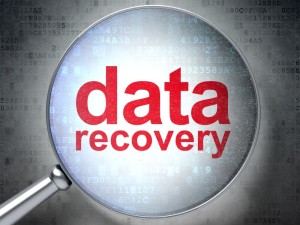
Backup disaster recovery–no matter what the cause–can be devastating for your business without proper preparation.
Backup disaster recovery is more necessary than ever as cyber threats become more prevalent and insidious. This doesn’t mean it’s strictly limited to natural disasters since human beings can cause just as many problems. Nevertheless, the combined threats permeating cyberspace are at red alert level now.
For your business, not having some form of backup in today’s times becomes the worst type of risk. Entrepreneur recently reminded that 40 to 60 percent of all small businesses don’t survive disasters. All of this comes from lack of evaluation on what makes a business vulnerable.
It’s easy to get complacent if nothing ever happened to your business in the past. What didn’t happen maybe five or ten years ago could easily happen now, especially newer threats you’re not aware exist.
So what are some common threats that could threaten your business data? With proper backup tools, none of these have to make you worry.
The Current Threat of Ransomware
This could soon become the worst cyber threat in the world. We’ve written about it before in our blogs, but we’ve seen an increase in ransomware since the first of the year. It’s been cited recently as one of the worst-case-scenarios in business disasters.
What makes this threat so bad is it’s so easy to catch if your employees inadvertently click a link in an email. Those behind ransomware frequently create convincing emails that appear to come from government agencies or superiors in a company.
Once the ransomware gets into your system, a hacker can shut down your entire network and demand a ransom to get your files back.
While some companies get their data returned after paying a ransom, not all do. It’s better to create reliable backup systems to prepare for this growing problem. With proper IT management, you can succeed, especially through the cloud.
Natural Disasters
Just about anything can happen in the way of natural disasters, and it goes far beyond hurricanes or earthquakes. Now freak winter storms or even floods can happen in places you wouldn’t expect. Your own business location may have typically calm weather, then suddenly experience something on a biblical level.
These events could wipe out your business in an instant. Having an on-site server could mean your entire business data disappearing forever. Even some other forms of backup may not have complete reliability, especially using something outdated like tapes.
Once again, with more reliable backup services from quality IT management, you can retrieve your files the same day without having to wait for hours. Through the cloud, you can access everything anywhere you find an Internet connection.
Human Error or Deliberate Disasters
While nature can always wreak havoc on a business, so can human beings. Sometimes a disaster may occur strictly because an employee accidentally deletes important data. Despite all the technological advances out there, it’s still far too easy to press one button wrong that eliminates entire databases.
Other times, employees can do things out of spite due to dissatisfaction in their jobs. When this happens, it can bring even more damage and cost you a fortune in downtime.
Small businesses experiencing downtime could have costs up to $427 per minute, so it’s time to prepare for any occurrence. Because you may have employees numbering in the hundreds, it only takes one of them to create a major problem accidentally or intentionally.
Through superior BDR systems, this kind of disaster won’t leave you hanging. What’s important is finding an IT provider that’s reliable and affordable.
Let us provide the reliable backup disaster recovery system you need here at SystemsNet.
Contact us to find out more about our comprehensive IT services.

